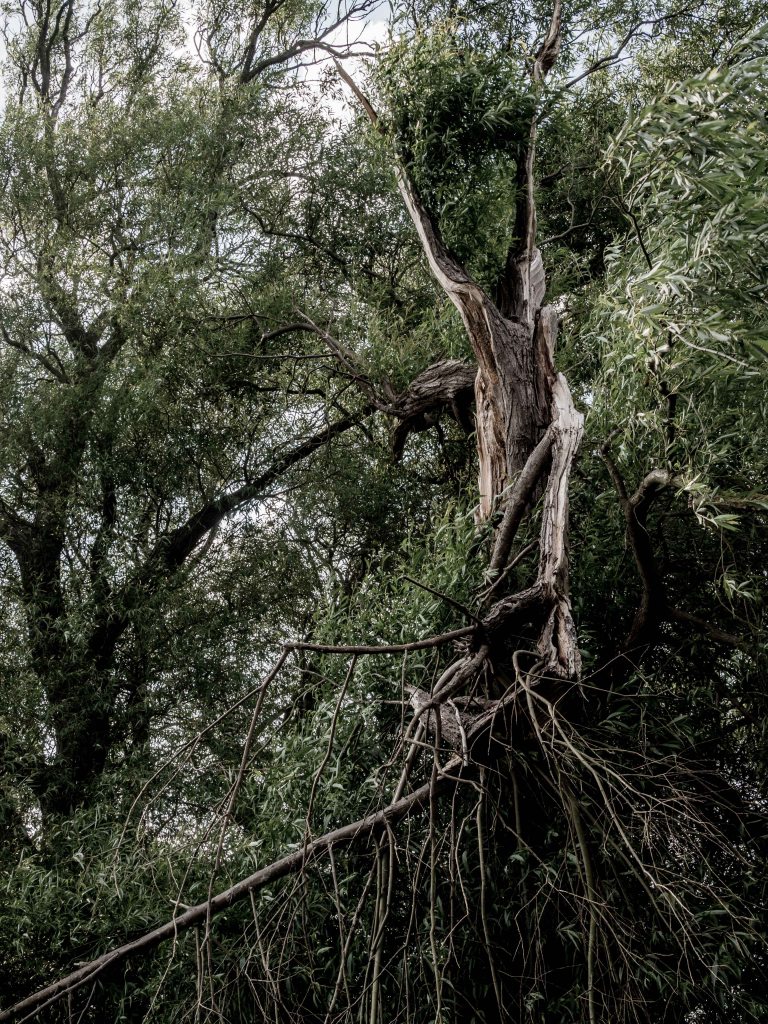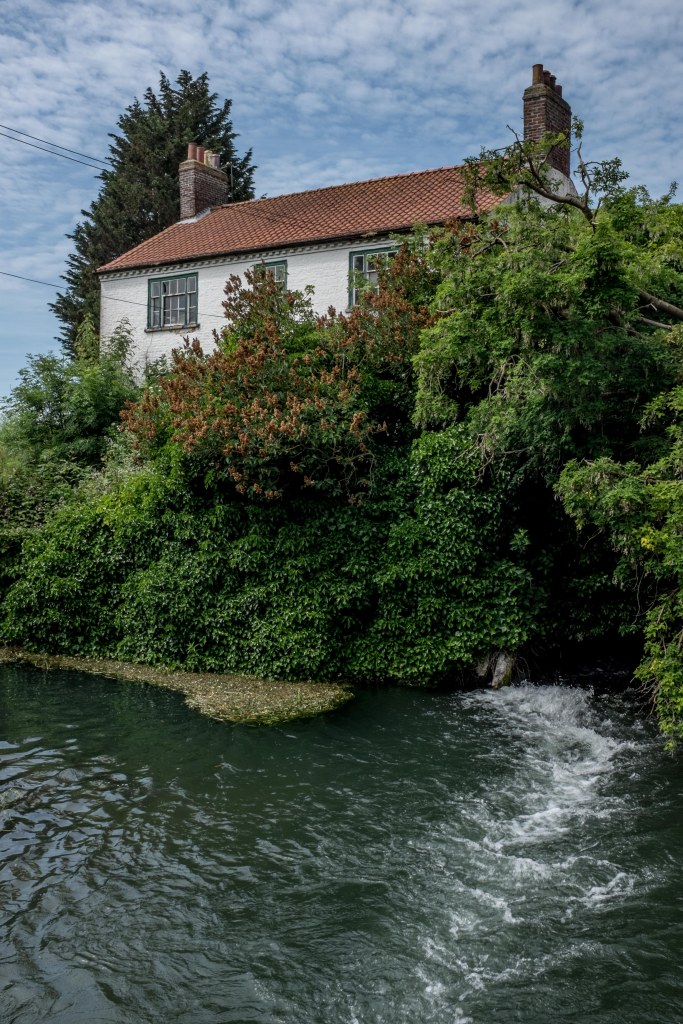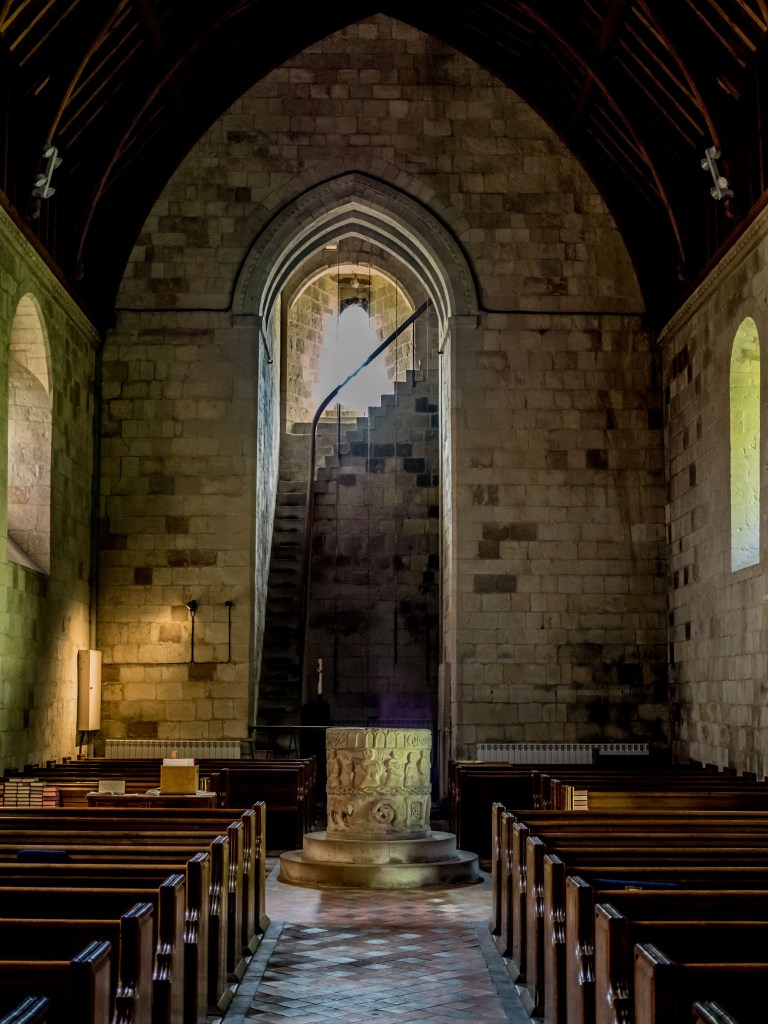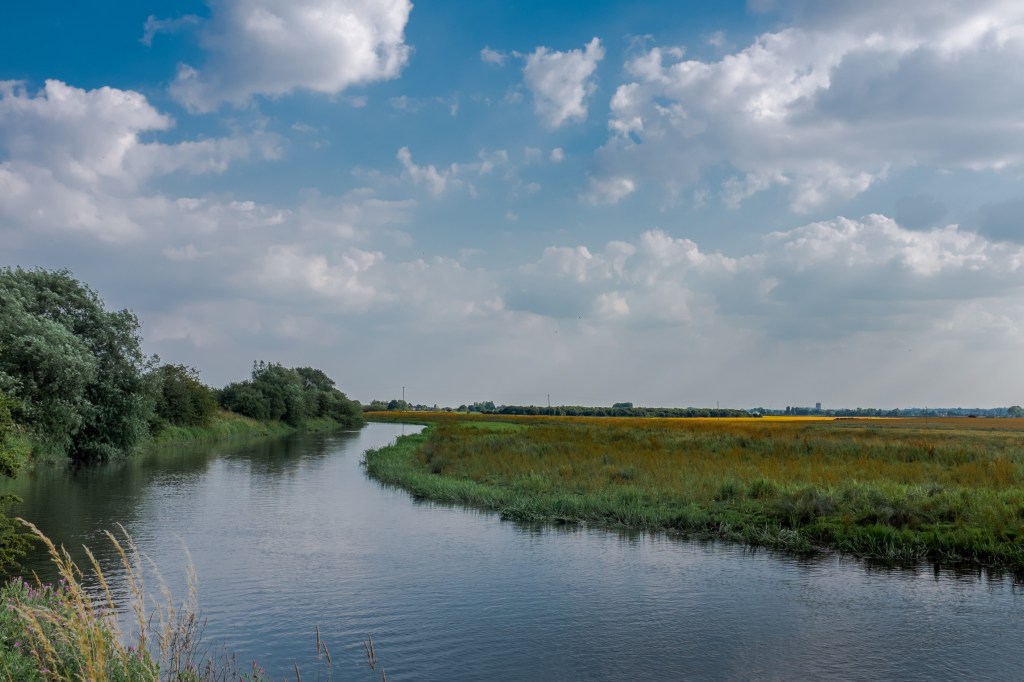Exploring the Sources of the River Hull
Just where does the River Hull start? The Open Bridges exhibition inspired many discussions about its origins. We heard about places to explore the springs and streams – one couple spoke of the spring rising in their own back garden.
So, our first outing for A River Full of Stories was on the first day of the 2018 heatwave when we went in search of the origins of the River Hull, making a dozen stops along the way.
A series of springs bubble up in the Yorkshire Wolds soon becoming the headwaters of the River Hull. These beautiful chalk streams are the most northerly in the country, habitat for rare aquatic plants and wildlife. At Kilham, Spring Terrace overlooks the water rising from the ground, creating a pond, home to a family of geese and goslings. A little further south where Bracey Bridge spans the stream as it runs through the woodland a treecreeper spirals up the slender trunks.


By Driffield Canal lock the water from the river nearby tumbles as it feeds the canal, frothing and churning while only a few feet away mayflies skim the still surface of the water. Further along at Snakeholme Pastures long grasses disguise the path by the river. Just the sound of bird song dots the air. The gentle flow of the water is so clear that it reveals the previously hidden depth of the chalk river bed. Moorhens swim amongst the bulrush and yellow flag iris.


We journey west where in Kirkburn speckled wood butterflies feed from the nectar in St Mary’s Church garden. Yet another origin of the river appears in the woodland behind the beautiful church. Upstream north-east and the grounds of Elmswell Hall a further source of the river bubbles up, already full of the little white petalled flowers of water crowfoot. The stream flows clear and calm under the bridge at Little Driffield.


Stopping off at Foston Beck in the idyllic village Foston-on-the-Wolds, the water gushes into the mill pond. We meet Barry who has lived there for over 60 years and told us about times past when the village had a brewery, two churches, vicarages and a water mill. Coal and grain were traded from barges. Barry called up the trout up from the pond and dozens came to the surface expecting to be fed.
North of Beverley where the river is at its most pastoral, meadow brown and green veined white butterflies rise from the grasses. Meadow-sweet, teasels and willow herb stand by the hedges. The chattering of grasshoppers is only disturbed by a pair of yellow hammers calling to each other, ‘little-bit-of-bread-and-no-cheese’. It is hot and peaceful, just the odd dog being taken for a plod. Further along a couple of dragonflies swoop out over the river to a family of ducks squabbling by the bank adjacent to the deserted medieval village of Eske.


The sun beats down over a beautiful stretch of the river as it flows near Rotsea to Emmotland. The water is high and cool despite the heat of the summer. Teeming with hundreds of tiny fish under the surface – roach and rudd – it flows smoothly by as damselflies jizz along the bank and a cockerel crows over and over. Butterflies, dragonflies and grasshoppers abound where boats are moored at Bethells Bridge. The air adjacent to Tophill Low is as still as can be, and just beyond the bridge at Emmotland two sleek Brigham scows race past, the breeze and blue skies refreshing as they return to and fro along the stretch.

Words: Lou Duffy-Howard, photographs: Richard Duffy-Howard
Visit the River Full Of Stories memory page here for more stories, films and photographs.
Rich & Lou Duffy-Howard
Open Bridges made history when for the first time all 13 of the bridges over the River Hull in the UK’s City of Culture 2017 raised, swung or closed simultaneously splitting the city of Hull in two at 20:17 hours on 22nd September 2017. Historic vessels sailed down the River to be met by 21st century tugs.
Open Bridges is an independent not for profit Hull/East Yorkshire based project.